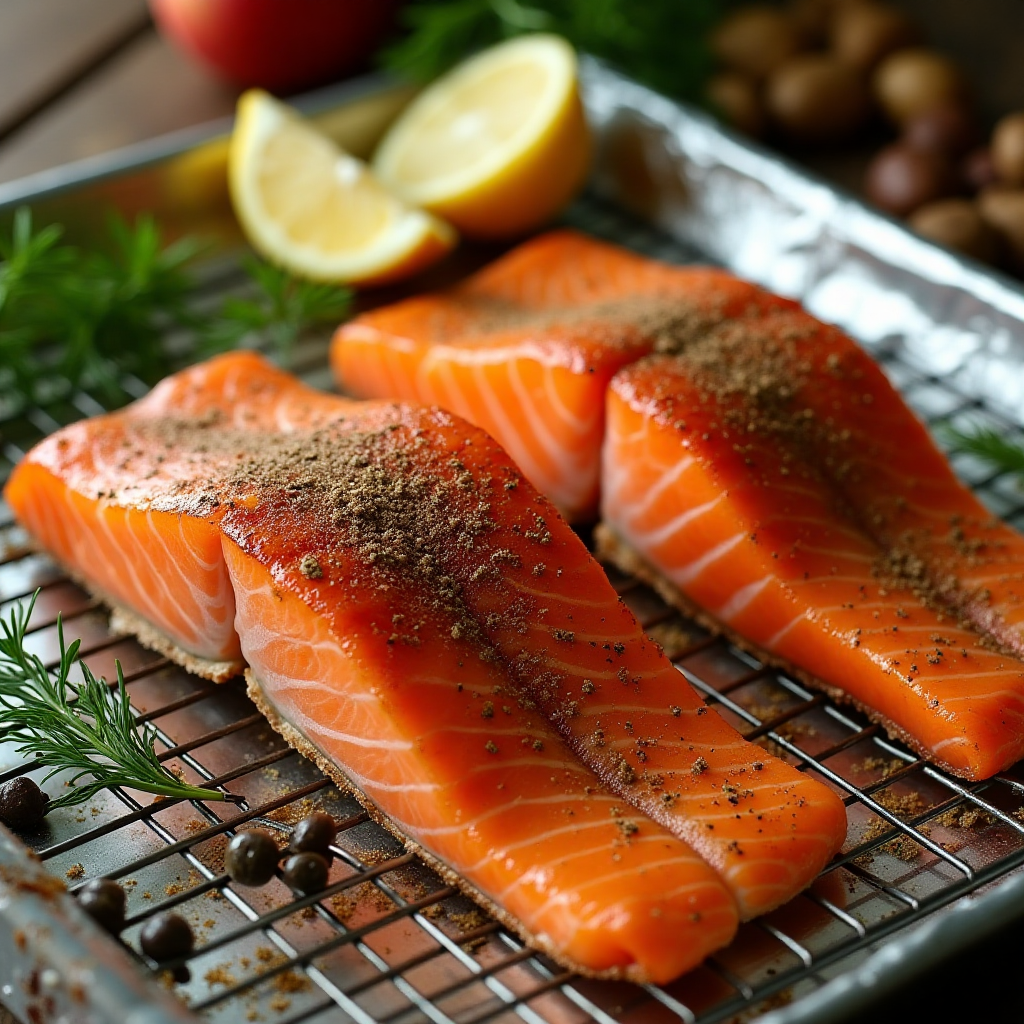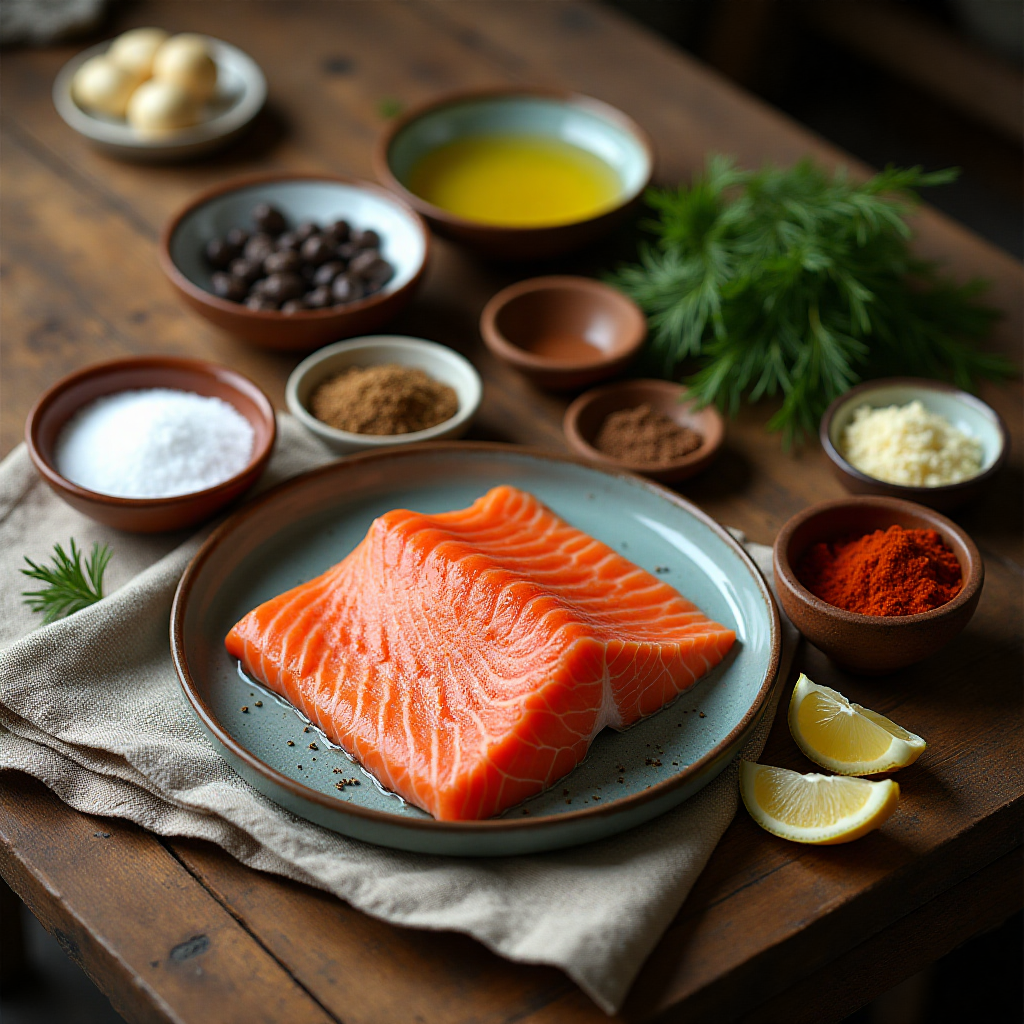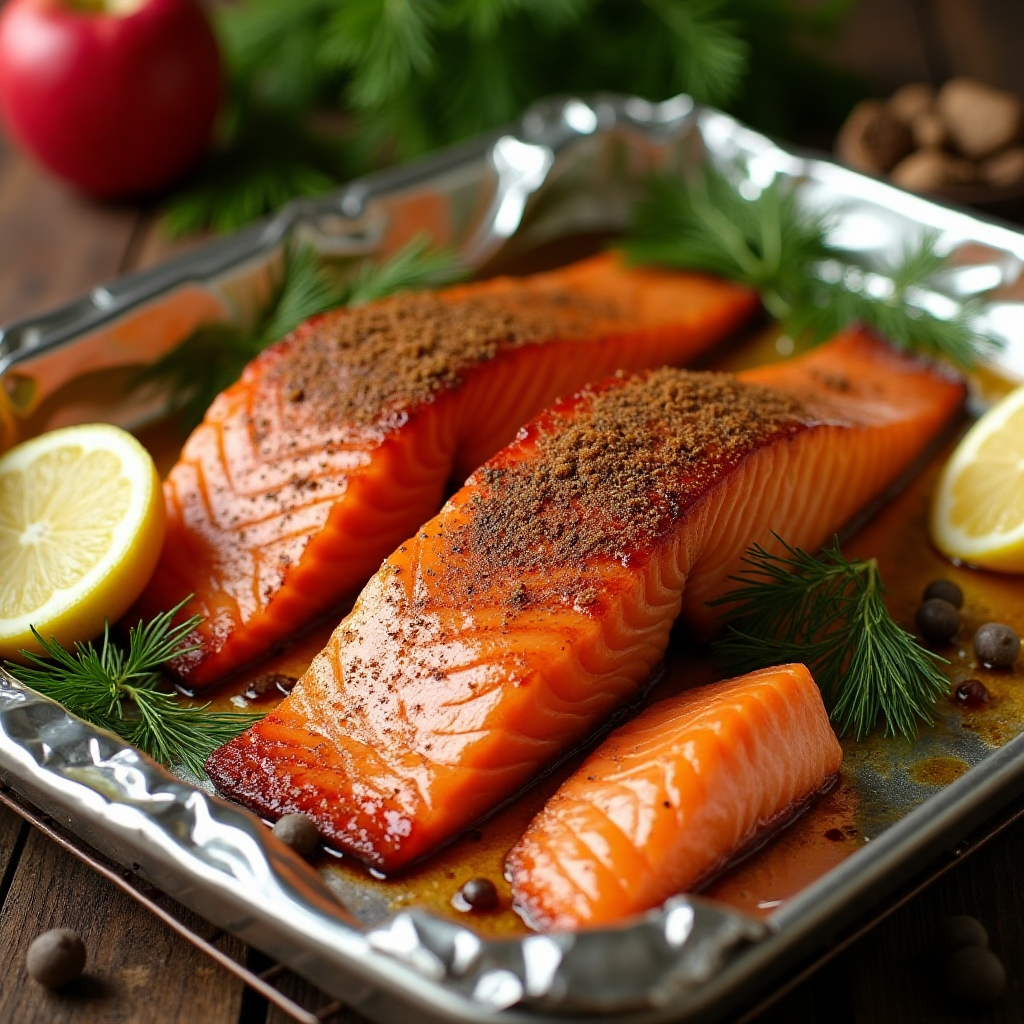How To Smoke Salmon Without a Smoker
Craving that rich, smoky salmon flavor but don’t own a fancy smoker? You’re in for a treat! Learning how to smoke salmon without a smoker opens up a world of delicious possibilities right in your own kitchen. This incredibly flavorful fish transforms into restaurant-quality perfection using simple household tools you already have.
Here’s a fascinating fact: Native Alaskans have been smoking salmon for over 4,000 years using nothing more than wood fires and natural air circulation. Today, we can achieve similar amazing results using modern kitchen equipment. This technique is perfect for busy home cooks who want gourmet flavors without the hefty investment in specialized gear.
What makes this method so special is its simplicity and accessibility. You’ll spend just 15 minutes on prep work and achieve results that rival expensive smoked salmon from gourmet stores. Plus, it’s incredibly family-friendly – even kids love helping with this fun cooking project! If you enjoyed our popular “Pan-Seared Salmon with Lemon Butter” recipe, you’ll absolutely love this smoky twist that takes salmon to the next level.
Table of Contents
What is Smoking Salmon Without a Smoker?
So what exactly does it mean to smoke salmon without a smoker? Think of it as culinary magic happening right in your kitchen! Ever wondered how restaurants achieve that perfect smoky flavor without those massive outdoor units? The secret lies in creating controlled smoke using simple techniques that trap and infuse those incredible flavors directly into your fish.
This method involves using wood chips, aluminum foil, and either your oven, stovetop, or grill to create a mini smoking environment. It’s like having a professional smokehouse condensed into your everyday cooking space! The beauty of this approach is that you’re essentially hacking the traditional smoking process using creativity and basic kitchen tools.
You know what they say – “the way to a man’s heart is through his stomach” – and nothing captures hearts quite like the aroma of perfectly smoked salmon wafting through your home. The best part? You’ll save money while impressing everyone with your newfound smoking skills. Ready to become the salmon smoking master of your kitchen?
Why You’ll Love This Smoked Salmon Recipe:
Rich, Restaurant-Quality Flavor at Home
This method produces incredibly rich, smoky salmon that rivals expensive restaurant dishes. The wood chips create authentic smoke flavor that penetrates the fish, giving you that perfect balance of smokiness and natural salmon taste. Your kitchen will smell like a gourmet smokehouse, and every bite delivers that coveted smoky essence you’ve been craving.
Budget-Friendly Alternative to Store-Bought
Making smoked salmon at home costs a fraction of what you’d pay at the grocery store or restaurant. A pound of fresh salmon transforms into premium smoked fish for under $15, while store-bought versions can cost $30 or more. You’ll get double the quantity for half the price, making this an incredibly smart choice for your wallet.

Customizable Seasonings and Toppings
The beauty of this recipe lies in its versatility. You can experiment with different wood chip varieties like apple, cherry, or hickory for unique flavor profiles. Add your favorite seasonings, from classic dill and lemon to adventurous cajun spices or maple glazes. Each batch becomes your signature creation, tailored to your family’s taste preferences.
If you love our “Honey Garlic Glazed Salmon” recipe, this smoky version will become your new obsession. The combination of home smoking and custom seasonings creates endless possibilities for delicious meals that bring everyone to the table.
How to Make Smoked Salmon Without a Smoker:
Quick Overview
This simple technique transforms ordinary salmon into smoky perfection using basic kitchen equipment. The process creates tender, flaky fish with authentic smoky flavor that melts in your mouth. You’ll love how the gentle smoking process keeps the salmon incredibly moist while building complex, rich flavors.
Total Time: 45 minutes Prep Time: 15 minutes
Smoking Time: 30 minutes Serves: 4-6 people
Key Ingredients for Smoked Salmon Without a Smoker:
For the Salmon:
- 2 lbs fresh salmon fillet, skin removed
- 2 tablespoons olive oil
- 1 teaspoon salt
- 1/2 teaspoon black pepper
- 1 tablespoon brown sugar
- 1 teaspoon garlic powder
- 1 teaspoon paprika
For the Smoking Setup:
- 2 cups wood chips (apple, cherry, or hickory)
- Heavy-duty aluminum foil
- Large roasting pan with lid
- Wire cooling rack
Optional Seasonings:
- Fresh dill sprigs
- Lemon slices
- Capers for serving

Step-by-Step Instructions:
Step 1: Prepare the Wood Chips Soak your wood chips in water for at least 30 minutes before starting. This prevents them from burning too quickly and ensures steady smoke production. Drain the chips and set aside. Choose apple wood for mild sweetness, cherry for subtle fruitiness, or hickory for stronger smoky flavor.
Step 2: Season the Salmon Pat the salmon fillet completely dry with paper towels. Brush both sides with olive oil, then season generously with salt, pepper, brown sugar, garlic powder, and paprika. Let the salmon rest at room temperature for 15 minutes to allow the seasonings to penetrate the fish.
Step 3: Create Your Smoking Setup Line your roasting pan with heavy-duty aluminum foil, leaving enough overhang to create a sealed packet. Spread the soaked wood chips evenly across the bottom of the foil-lined pan. Place a wire cooling rack over the wood chips, ensuring it sits about 2 inches above them.
Step 4: Position the Salmon Carefully place the seasoned salmon fillet on the wire rack, skin-side down if any skin remains. Make sure the fish doesn’t touch the wood chips directly. Cover the entire pan tightly with the lid or more aluminum foil, creating a completely sealed environment.
Step 5: Start the Smoking Process Preheat your oven to 225°F (110°C). Place the sealed pan on the middle rack and smoke for 25-30 minutes. You’ll start seeing smoke within the first 10 minutes. The salmon is done when it flakes easily with a fork and reaches an internal temperature of 145°F (63°C).
Step 6: Rest and Serve Remove the pan from the oven and let it rest for 5 minutes before carefully opening the foil. The salmon will continue cooking slightly from residual heat. Garnish with fresh dill, lemon slices, and serve immediately for the best flavor and texture.
What to Serve Smoked Salmon With:
This versatile smoked salmon pairs beautifully with numerous sides and accompaniments. Serve it over fluffy rice pilaf or creamy mashed potatoes for a hearty meal. Fresh bagels with cream cheese, capers, and red onions create a classic brunch spread that everyone loves.
For lighter options, try serving the salmon over mixed greens with cucumber, cherry tomatoes, and a light vinaigrette. Roasted asparagus, steamed broccoli, or sautéed green beans complement the smoky flavors perfectly. Don’t forget crusty sourdough bread for soaking up any delicious juices.
Wine lovers will appreciate how this smoked salmon pairs with crisp white wines like Sauvignon Blanc or Pinot Grigio. For non-alcoholic options, sparkling water with lemon or iced tea provide refreshing contrasts to the rich, smoky fish.

Top Tips for Perfecting Smoked Salmon Without a Smoker:
Choose the Right Salmon Cut Select thick, center-cut salmon fillets for the best results. Thicker pieces smoke more evenly and stay moist throughout the process. Avoid thin tail pieces that can overcook quickly. Wild-caught salmon often has better flavor than farmed varieties, but both work well with this method.
Don’t Skip the Soaking Step Always soak your wood chips for at least 30 minutes before using them. Dry chips burn too quickly and create harsh, bitter smoke instead of the gentle, sweet smoke you want. If you’re short on time, even 15 minutes of soaking helps significantly.
Monitor Temperature Carefully Keep your oven temperature steady at 225°F (110°C). Higher temperatures cook the salmon too quickly, preventing proper smoke absorption. Use an instant-read thermometer to check doneness – the internal temperature should reach 145°F (63°C) for food safety.
Seal Your Setup Properly Creating an airtight seal is crucial for proper smoke circulation. Use heavy-duty aluminum foil and crimp the edges tightly around your pan. Any gaps allow smoke to escape, reducing the flavor intensity. Check your seal before placing the pan in the oven.
Experiment with Wood Combinations Try mixing different wood chip varieties for complex flavor profiles. Apple and cherry create a mild, sweet smoke, while hickory adds robust smokiness. Start with single varieties to understand each flavor, then create your own signature blends.
Storing and Reheating Tips:
Refrigeration Storage Store leftover smoked salmon in an airtight container in the refrigerator for up to 4 days. Wrap individual portions in plastic wrap before placing them in the container to prevent the fish from drying out. The smoky flavor actually intensifies slightly after a day in the refrigerator.
Freezing Instructions For longer storage, wrap individual portions tightly in plastic wrap, then place in freezer bags. Remove as much air as possible before sealing. Properly stored smoked salmon keeps in the freezer for up to 3 months. Label with the date to track freshness.
Reheating Methods The best way to reheat smoked salmon is gently in a 275°F (135°C) oven for 8-10 minutes. Cover with foil to prevent drying out. Alternatively, break it into flakes and add to pasta dishes, salads, or scrambled eggs where gentle reheating happens naturally during cooking.
Serving Cold Options Smoked salmon is delicious served cold straight from the refrigerator. Use it in bagel sandwiches, salads, or as an elegant appetizer with crackers and cream cheese. The flavors remain vibrant when served chilled, making it perfect for meal prep and quick lunches.
Nutritional Information
| Nutrient | Per 4 oz Serving |
|---|---|
| Calories | 185 |
| Protein | 28g |
| Total Fat | 8g |
| Saturated Fat | 2g |
| Cholesterol | 70mg |
| Sodium | 520mg |
| Potassium | 450mg |
| Omega-3 Fatty Acids | 1.8g |
Note: Nutritional values are approximate and may vary based on specific ingredients and preparation methods.
